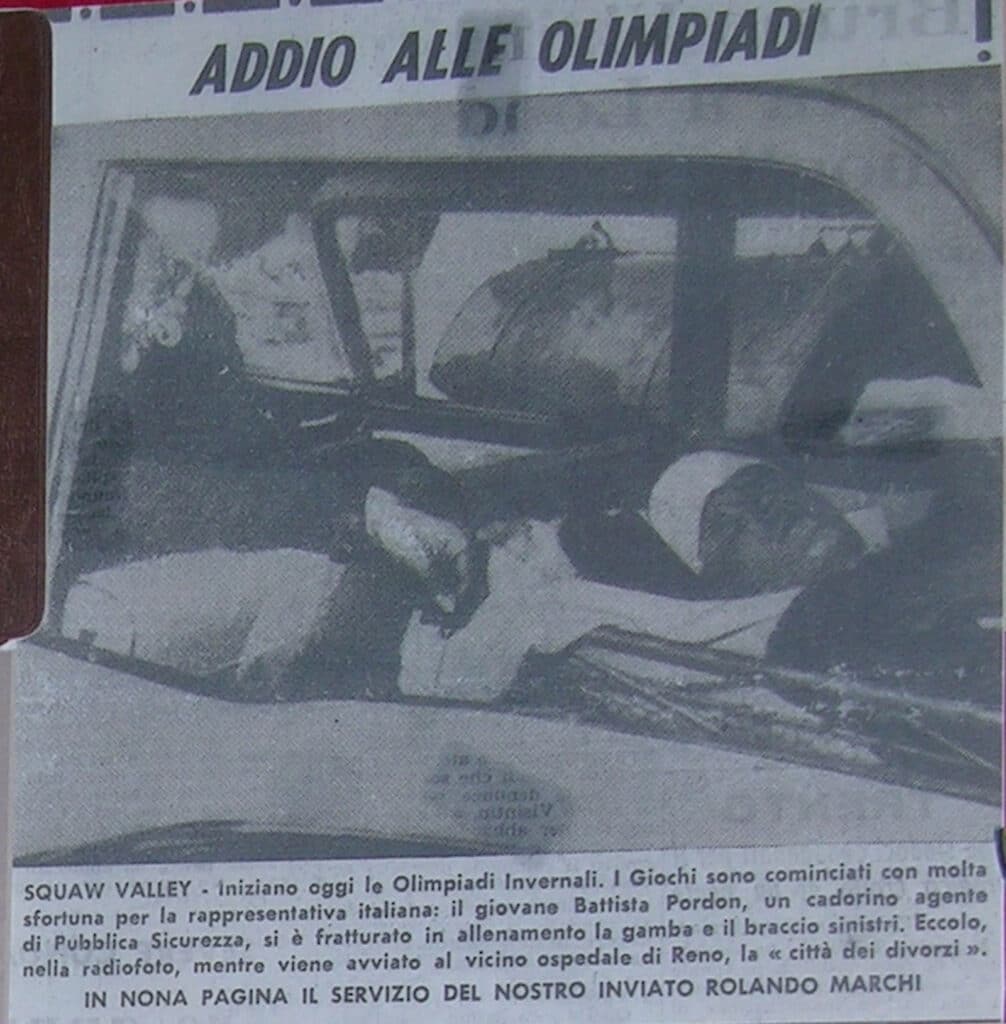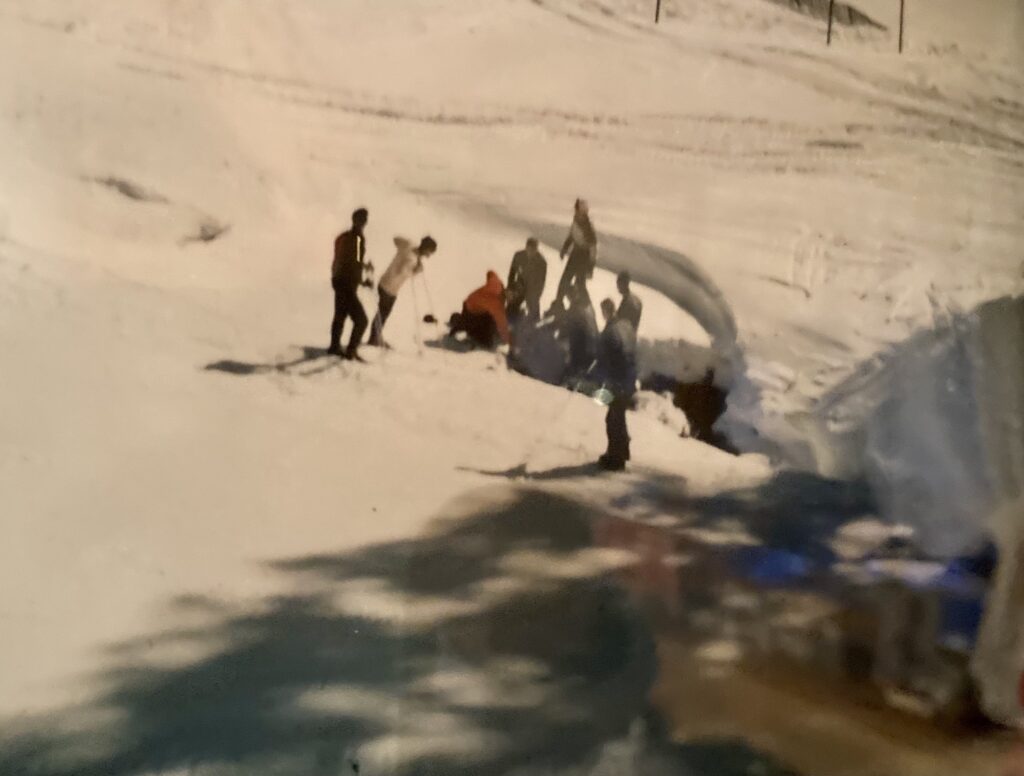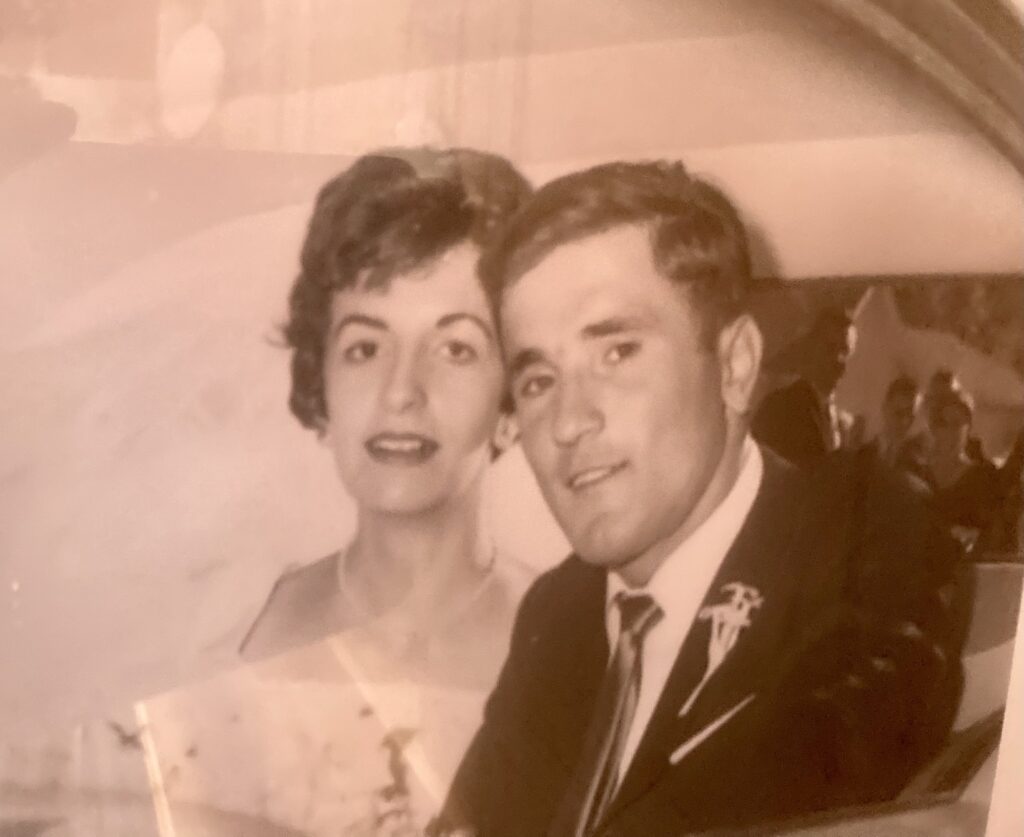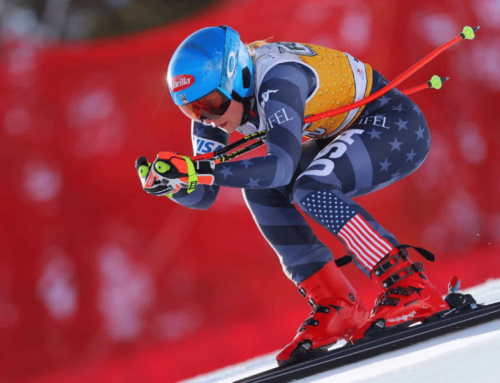An Italian Cowboy: The remarkable story of 1960 Olympian Battista “Tita” Pordon
Photo: Pordon
Pordon created a stir as Italy’s most promising young downhill racer with great expectations heading into the 1960 Squaw Valley Olympics. However, a horrific training crash on the Olympic slope suddenly and unexpectedly changed his life forever
For Battista “Tita Pito” Pordon, being named to the 1960 Italian Olympic Team was a dream come true. As one of Europe’s top young ski racers, it was a golden opportunity to make his mark on the world’s grandest sporting stage.
The allure of skiing on an unknown mountain, nearly 6,000 miles away in Northern California, added to the prestige of the challenge.
“It was an adventure because it was in California; it was practically in another world,” said the 82-year-old Pordon, in an interview with Ski Racing Media at his home in San Vito di Cadore, Italy.
It was when ski racing needed a compelling new star as Austrian three-time Olympic champion Toni Sailer had recently turned professional. Pordon seemed more than capable.
“Tita” grew up in the small Italian Dolomites town of San Vito di Cadore, just down the road from its glamorous neighbor Cortina d’Ampezzo. As a motivated and determined teenage athlete, Pordon quickly ascended the ranks of Italian ski racing. He honed his talents on wooden skis in an area basking in the afterglow of having hosted the 1956 Winter Olympics.
Pordon made headlines, successfully competing in San Vito, Cortina, Arabba, Cencenighe and at the Italian Junior Championships in Bardonecchia.
As a downhill specialist, his breakthrough came at the legendary 3Tre races in Madonna di Campiglio in 1959. Just 19 and starting bib No. 52, Pordon surprised everyone with a fourth-place finish, only beaten by Austrian star Karl Schranz, Swiss Willi Forrer and his elder countryman Bruno Alberti.
“There was so much excitement with those achievements because back then you had to take care of everything by yourself – it was so unique compared to today,” said Pordon.
He improved his technique, in an era when Frenchman Jean Vuarnet was developing the aerodynamic “egg position,” racing at renowned venues including Kitzbühel and Wengen. Pordon was promoted to the Italian National Team in 1959. Shortly thereafter, he was selected to the Italian Ski Team for the Squaw Valley 1960 Olympic Winter Games.
“There was anxiety, hope and tension, but then I was selected for the team in Milan,” Pordon recalls of the unforgettable moment. “They gave me a big party in the center of San Vito.”
Life couldn’t get any better for the talented Italian ski racer.
First Impressions of Squaw Valley, California, 1960
Explaining the mystique of the 1960 Winter Olympics in Squaw Valley, California, from a European perspective, Pordon said, “Everybody grew up watching Western movies with cowboys and Indians. It was fascinating and we were curious to go there.
“It was an adventure for the world to have the Olympics in America, in California.”
The overseas journey to California in the winter of 1960 – as part of an Italian Olympic delegation of 28 athletes – was Pordon’s first visit to the United States. It was an enlightening experience, full of large and small discoveries.
“There was a big reception for us at the airport in Reno with cowboys and Indians surrounding the airplane – it was fantastic,” Pordon reminisces. “When we got there, it was like a dream. We couldn’t believe that we were really there.
“We went to Squaw Valley and arrived at the Olympic Village. At first, there was no snow, but then it started snowing and didn’t stop, day or night.
“There was also the first time I drank pineapple juice – they brought it from Hawaii. It tasted so good. This didn’t exist in Italy.”
The accident
On a sunny and pleasant morning in Olympic Valley, California, spirits were high and the excitement palpable in anticipation of the VIII Olympic Winter Games. More than 60 racers from 21 countries were training on the unknown 1.92-mile Squaw Peak downhill course.
As he recalls, Pordon clocked a top result, third place, in a nonstop training run. He was the fastest among the Italian racers.
“It wasn’t like Wengen or Kitzbühel, but it was a long, challenging downhill,” he said.
After the timed training, Pordon and two of his Italian teammates remained on the slope, testing ski wax on unfamiliar snow.
Then, everything suddenly went terribly wrong for the 20-year-old Italian racer. Pordon made a misguided left turn and crashed violently into a ditch. He broke his left femur, collarbone, elbow, and wrist and suffered head contusions. He was incapacitated.
“I thought that the hole was a shadow, but it wasn’t – it was a hole,” Pordon recalled. “I was in a coma for a couple of days, so I don’t remember seeing the shadow or the hole because the coma erased that.”
After receiving emergency treatment on the scene, Pordon, who was unconscious, was taken down the mountain and rushed by ambulance to Washoe County Hospital in Reno.
He remained in a coma for two to three days as the Olympic Games began. Contested one week after his violent crash, the men’s downhill gold medal was won by the Frenchman Vuarnet. Four of Tita’s Italian teammates competed, but they were distraught. Thoughts were with their hospitalized countryman.
“I woke up from the coma and didn’t know what happened,” Pordon said. “I was in shock – I couldn’t speak.”
A twist of fate
Pordon underwent a long and grueling three-month recovery in the Nevada hospital. Unable to communicate with doctors and nurses, the Italian National Olympic Committee (CONI) found an interpreter for him. She was an American college student with an Italian heritage from Lucca. Her name was Barbara Sbraglia and she quickly became influential in Pordon’s physical recovery and captured his heart.
The Italian ski racer never fully recovered physically from his injuries. After unsuccessful attempts to return to racing the following season, Tita realized it was time to move on.
However, some good resulted from the debilitating accident. Tita and Barbara married, settling down together in Reno. The brutal crash proved to be a life-altering twist of fate.
“I remember we got engaged after just three months,” Pordon says, joking that perhaps he lost his mind after hitting his head.
Creating a new life in America
Pordon hobbled and, on crutches, traveled and explored other parts of the United States before returning home to the Italian Dolomites. He finally had leg surgery at a Cortina hospital. After further rehabilitation and recovery, he returned to Reno in the summer of 1961 and married Barbara.
“We were talking and writing to each other for one year, then I went back to America and we got married,” he said. “She graduated as a teacher and then we started a beautiful family.”
The couple had two children: a daughter Jamie and a son Jeremiah.
Tita, who will turn 83 in late November, has shared his time between Nevada, California, and Northern Italy for more than six decades now. He often makes extended returns to his childhood home in San Vito di Cadore. Monte Antelao, the second-highest peak in the Italian Dolomites, looms majestically above his hometown.
For many years in the U.S., Pordon worked as a ski instructor and coach but also diversified his skills as a manager and hotelier at the Mt. Rose Ski Resort near Reno. The entrepreneurial Italian took a loan and constructed a multi-million dollar hotel in Heavenly Valley, California. However, it only remained in business for three years. He persevered through lengthy legal battles afterward.
He also coached the Far West Ski Team and the Blue Angels Ski Club at Heavenly Valley and later assisted 1983 overall World Cup champion Tamara McKinney. Pordon also unsuccessfully interviewed for the head coaching position at the U.S. Ski Team.
He lost his wife Barbara to cancer in 1996.
Reflections upon the life-altering accident
Pordon looks back positively on the traumatic event and ultimate outcome of that February 1960 day in Squaw Valley, California. The sudden death of one dream opened the door to a vastly different one.
“It opened up everything – I traveled America and learned how to speak and write English,” he says about the accident. “Now, I can go to America whenever I want. My family comes here too to vacation for three months. What more can you ask for?
“What would have happened if I had won the gold medal at the Olympics?” he wonders. “I don’t think I would have been as successful as I have been.
“You can win, win, win, but in America, I sacrificed, I worked, I invested, I skied and I got ahead. I failed too, but I learned from those failures.
“Without the injury, what would my life have been like? Maybe I would have gone to another Olympics, maybe two. And then?
“It turned out differently. And I look at how it went with a positive view. I discovered the world and have lived an intense life.”
Follow Brian on Twitter – @Brian_Pinelli


























